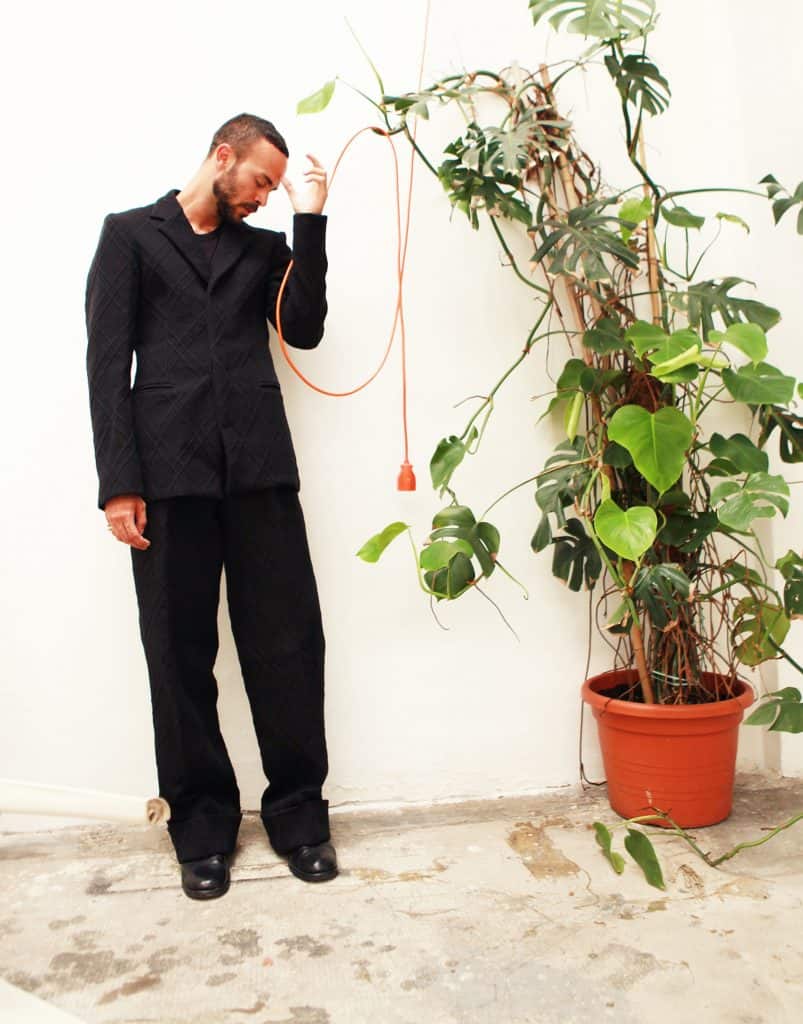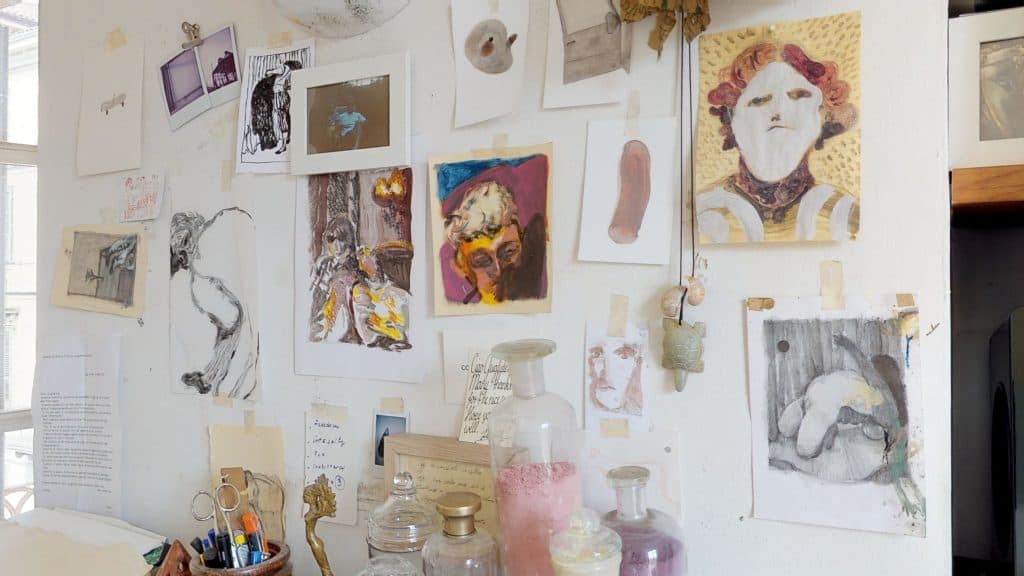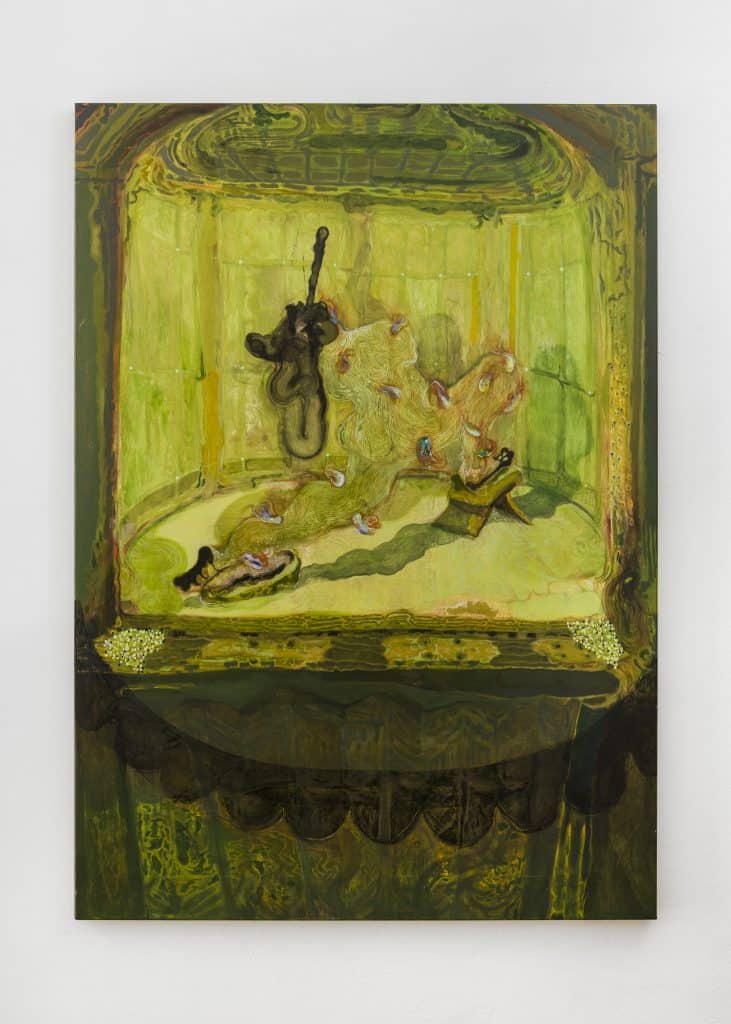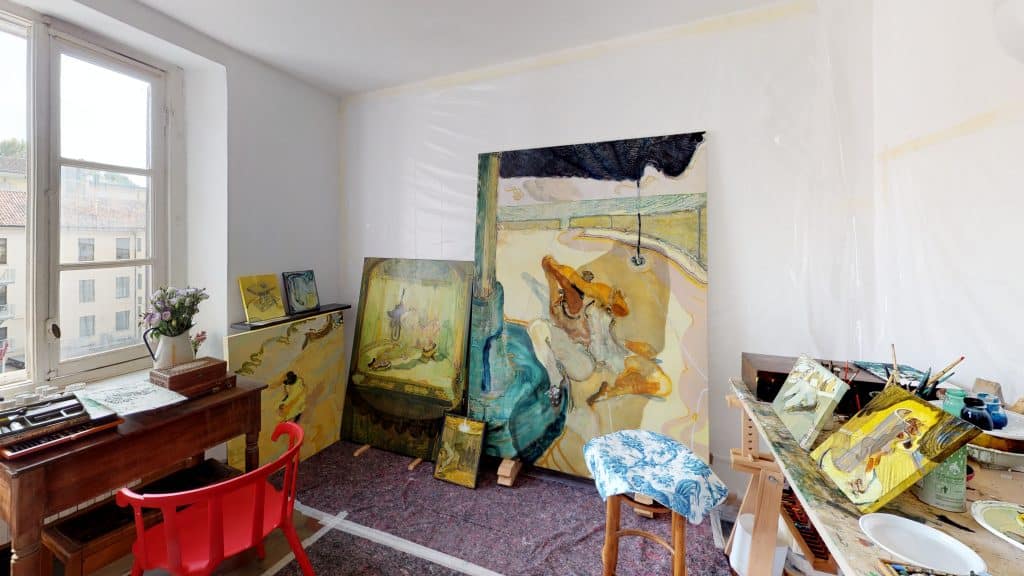Articles and Features
Studio Visit: Guglielmo Castelli
Artland visits Guglielmo Castelli, a figurative painter and emerging talent from Turin. Castelli’s work has been gaining attention this past couple of years and his inclusion in some interesting group exhibitions at prominent galleries around Europe shows how his work is catching the eye of seasoned industry talent spotters.
Hi Guglielmo, thank you for letting us visit you. Your studio seems like a really nice environment to work in, can you describe a typical studio day and how your practice unfolds when you’re working there?
This small space that I now call my studio was my first home, my first life experience alone. Even today, after almost 9 years have passed, I am very attached to these walls that have sheltered my silences and my melancholy.
Over the years it has maintained that intimacy typical of real spaces, which listen to things from within.
The terracotta on the ground is typical of Turin houses, the doors are a bit rickety, but I always manage to call it home.
I usually arrive in the studio very early in the morning, when there are still very few people around.
So I have the feeling that there are few prying eyes around me.
I start in the room with so much light and begin with drawing, I do it for hours. I create a sort of sample of bodies, which will take their place on the canvas later.
In the afternoon, I begin to understand which drawings I can think of to work on canvas…
I close the shutters before sunset.

Describe the process of making a painting, and how a work comes together for you.
Perhaps I will discover, in years to come, that everything I have drawn and painted is nothing but a single great story of bodies dancing, either with themselves or with someone else who, perhaps, never arrived. I have always believed more in the power of absences than in that of presence. A painting, as far as I’m concerned, works if it transmits only part of a story through a very precise composition (which comes from my studies as a theatrical set designer), from a chromatic choice …in short, all elements that help the pictorial process.
Is your work very process oriented? It looks as if drawing is very important to you, certainly in the evolution of a composition and how it comes together on the canvas, but how about preparatory work for a painting?
Many times I have tried to transpose short drawings on canvas, but it happens that certain drawings must remain on paper, they do not have the same power, the same composure that they have on paper.I try to put them on canvas and suddenly I see them as weak, lost, lost in the search for a foothold that not even painting can provide.
The process has always been fundamental for me. Painting is a result of choices, even of hitches. I learned that if I accept the freedom of the unexpected, I discovered over time I would always find new things—which in the end often give an appearance and a language different from the framework I had in mind before starting.
I draw because it’s the only way I can bear possibly finding nothing. I paint because it’s the only way I can be in the world.

Your paintings have a strongly performative element depicted within them. From the intimation of the proscenium spaces to the gestures and postures of the figures, tell us about your interest in theatre and where this comes from.
Pina Bausch said:
dance, dance, otherwise we are lost.
I chose to study scenography because in order to design a space you had to know what it was. I had to go in, observe it, try to understand it and retransmit it with my vision.
So I looked at Bertolt Brecht, Giorgio Strehler, Derek Jarman, Henrik Ibsen … reading helps me a lot, the power of the lives of others …
During my residency at the Kunstlerhaus Bethanien in Berlin I wondered how those studies, the things I had seen and heard could fit into my painting. And the need arose to represent those spaces, which previously contained the characters, as if they were the characters themselves. Francis Bacon in his painting described the body as a simple result of the surrounding space. And that’s how I treated my representations, an inside / outside between intention and constraint, will and error.

It is easy to recall many examples of painters of the avant garde depicting scenes of bohemians and performers; One thinks of various painters from the post-Impressionist period, artists as diverse as Toulouse-Lautrec, Sickert, Vuillard, Schiele, artists of the Weimar Republic, even Balthus and Lucian Freud. Have you had an interest in other types of paintings that convey this type of subject matter in different ways and do you feel that you follow any kind of artistic lineage? Which artists from the past have inspired you the most?
There are all of them inside me. I look at them with enormous respect and immense silence.
There is Bruegel’s snow and that blinding light, there is the composure of Antonio Donghi’s painting and his Magic Realism.
The liquefactions of Berlinde De Bruyckere, the harshness of certain visions of Victor Man … the solitudes of Leon Spilliaert.
But there is also so much more, there is the fashion I always look at with eyes full of wonder, from Yohji Yamamoto to Schiapparelli, from All about Eve to Jim Jarmusch.
There is so much, sometimes too much, but it’s my story and that’s okay.
You have a very distinctive and mannered way of representing the human form. Can you describe your ideas about representing movement and the body – it is clearly a major subject of your work?
The postures I try to represent are postures most often of constraint. My characters are rarely there on their own, but they fight for a private, personal space even though they are on display. To do this I have to go through a compulsion, a fluidification of their form that reminds me of a dance, a ritual.

What do you look for in a painting when you are the viewer?
I think of the painter, I try to find some signs in the painting, some amazing sign that he can tell another story beyond what I see.
Everything becomes silence around and I see only that light, those brushstrokes that intention of freedom that is a gift that happens to a select few.
Because with painting you don’t mind.
The protected abandonment and the veracity of the man in a gesture.
Can you name other artists working today you most admire?
Ambera Wellman and Genesis Belanger come to mind.

Relevant sources to learn more
Guglielmo Castelli Website
Rolando Anselmi gallery Website
Rolando Anselmi profile on Artland
Studio Visit: Nick Theobald